
FENIX LD75C
LED: 4x XM-L2 U2 CW, 1x XM-L Color (RGBW)
Battery: 18650 4x, 8x CR123A
Modes: 5 Main, 4 colors, strobe (Mix and Match)
Switch: Triple, headed
Date: April 2015
INTRODUCTION:
During February 2015, the prestigious company Fenix announced that it would begin a global campaign that would provide a total of 14 units of its new model LD75C to users who were willing to test and write and publish an analysis of the light the usual media.
After the relevant application, Fenix has once again seen fit to select me for this campaign, which I as always appreciate very much.

The shipment of the sample was carried out by FenixLinternas.com, our national distributor, who once again showed their professionalism and good work, very friendly communication and fast and excellent service.
Being a test sample, the flashlight came naked, without original packaging and lacking any type of accessory or replacement, which is understandable because what Fenix aim is to analyze the behavior, construction and management.

Thus, the new LD75C is the Fenix proposal that combines a high light output with an independent multicolor LED on the same main optics. And all in a very similar in appearance to the new LD60 also into multi-emitter segment with relatively compact size.
EXTERIOR FINISH:
The appearance of this new Fenix LD75C is a ultra compact multi-LED flashlight, with dimensions very balanced and fits perfectly in the pocket of a coat.

With a total length of 159mm, and a 73mm maximum diameter at optics, has a contained volume very comfortable in hand, weighing also very content, just 430g (without batteries).

The design is classic, machined in anodized aluminum with HA III except for the bezel in steel with sandblasted finish, and the buttons frame at the head of the flashlight which are also steel, this time with more polished finish.
Engravings in the body are minimal and reduced to the logo and model under the buttons and the typical temperature warning symbol next to the bezel, both well-defined and easy to read thanks to the great contrast between the black background and white lettering.


Flashlight optics is undoubtedly the most remarkable point of its design, because after glass lens with AR treatment we found a fivefold curious reflector, in which the four XM-L2 emitters enjoy a smooth reflective surface, while the XM-L Color, located in the central point, has a very unique rough finish. Centering in every five emitters is acceptable.
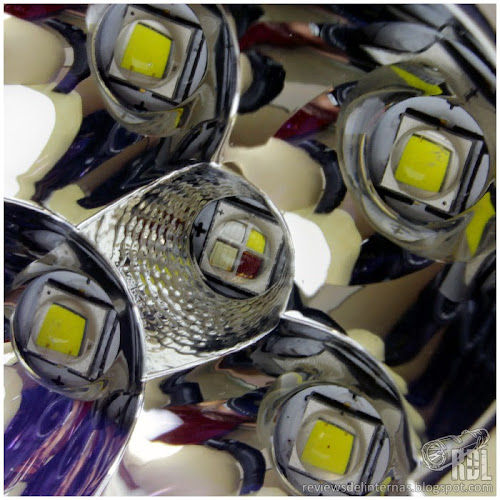
The conical part of the head and the first straight pipe section have discrete cooling fins, the whole body with a characteristic finish machining alternating small rectangles being embossed with smooth slopes, which results in a comfortable non-aggressive grip.
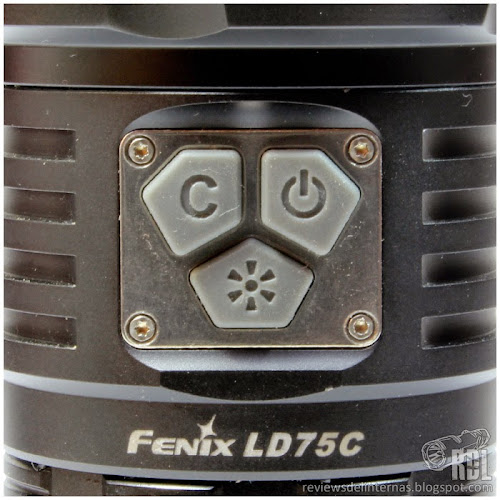
The switches through which we will control all modes and functions of this LD75C are located in the head, and are divided into three separate buttons, each with a different shape and a symbol in negative relief, so it is not exceedingly difficult to identify by touch. Buttons protrude from the frame, so that their use is possible even wearing gloves.


The housing for the batteries is directly machined into the body of the flashlight, without the typical battery cartridge holder. We found engravings inside that indicate the correct polarity. At the bottom of the tube there is the circuit with four springs, with whom we also see indications on the polarity for the batteries. Although the flashlight is equipped with electronic protection against reverse polarity, pay special attention since the provision of batteries (2S2P) and contact elements do not match with what you usually find in this kind of four-batteries flashlights (spring-contacts).
The threads come lubricated and clean, and show the typical Fenix square cut. The threads are fully anodized, since the body of the flashlight is electrically isolated.
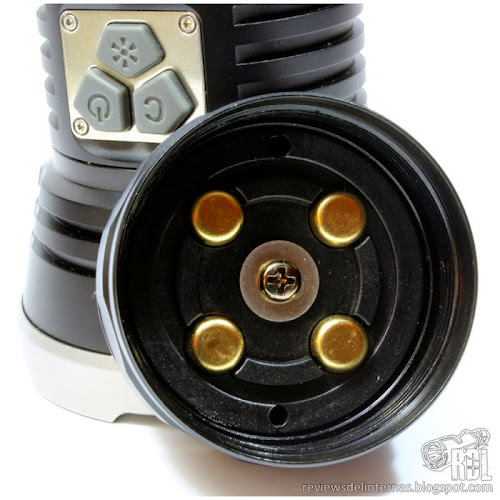
The tailcap, only removable part of this flashlight, has a design that allows solid tailstanding with a couple of holes in their discrete battlements to install a lanyard. Inside we found a disc with four contacts for the batteries, which rotates freely to match the two pin positions with respective holes.
USER INTERFACE:
As I already mentioned, the user interface is LD75C is controlled by a digital button set with three switches on the flashlight head. Each switch controls a separate function.
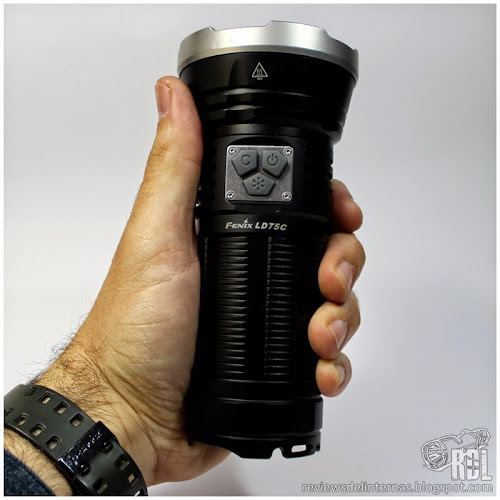
White light (4x XM-L2 U2)
- On and off: To turn the four XM-L2 of this LD75C you must hold for half a second the button with the IO symbol on the upper right corner. To turn off, repeat the operation.
- Changing Modes: Once the light is on, a simple click on the same switch toggles between the five main modes of white light (Eco-Low-Med-High-Turbo) in ascending order.
- Memory: The torch remembers the last mode used, and turns on in it the next activationn. The memory function works even if we remove the batteries.
- Strobe: To access the 4000LM white light variable frequency strobe mode just do a simple click on the third button located at the bottom and identified with a "flash" symbol. Access is instant, whether the flashlight is on or off.
- Shortcut to Turbo: Through a long press on the third button we will access the Turbo mode instantly, again regardless of whether the flashlight is on or off.

Color light (XM-L Color RGBW)
- On and off: As with white light, to turn on the XM-L Color we must hold the switch with the letter C, located in the upper left corner. Repeating the operation will turn off the color light.
- Changing Modes: Changing modes is done exactly as we have seen in white light: With the light on we must perform a simple click to toggle between colors and special strobe modes: Blue – Green – Red – White – Slow Red Strobe – Police Strobe.
- Memory: XM-L Color has memory, just like the white light.
- Charge status of the batteries: By double clicking on the C button, the flashlight will issue a 3 second flash indicating by its color the status of the batteries. Green equals maximum, blue medium and red minimum charge.
Finally, LD75C allows us "mix" modes from the two types of emitters, so that one may use in unison modes of each of the main sources of light, as if it were two separate torches. For example, to get the advertised 4200LM we need the 4 XM-L2 in Turbo mode and supplement them with the XM-L Color 200LM white mode.
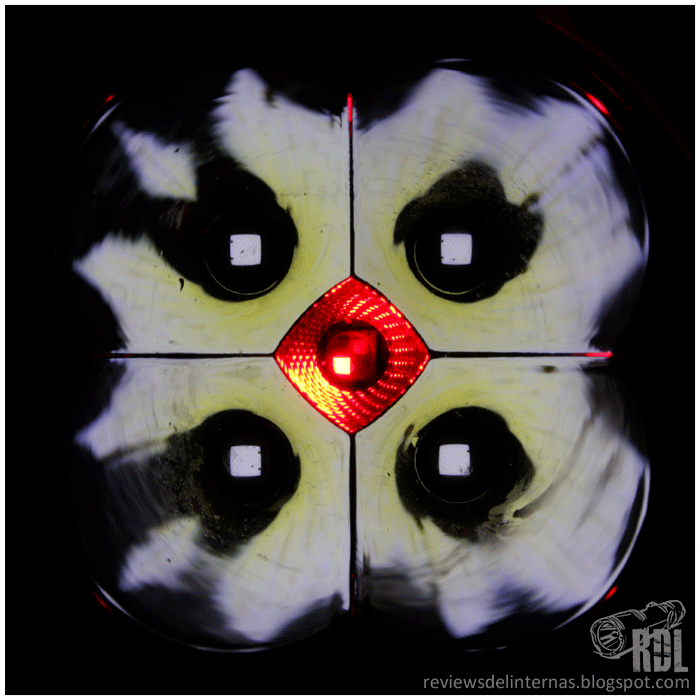
After the usual test on the integrating sphere modes of white light of this LD75C I can see how Fenix remains a benchmark in the field of specifications, with an absolutely stunning consistency. Recall that exclusively Fenix flashlights were used for the calibration process of the sphere, for his excellent agreement between specified and measured by the photodiode. Three years after this laborious procedure the results with all new releases of this brand give results "spot on target".

(All measurements are taken following the procedure ANSI NEMA FL1)
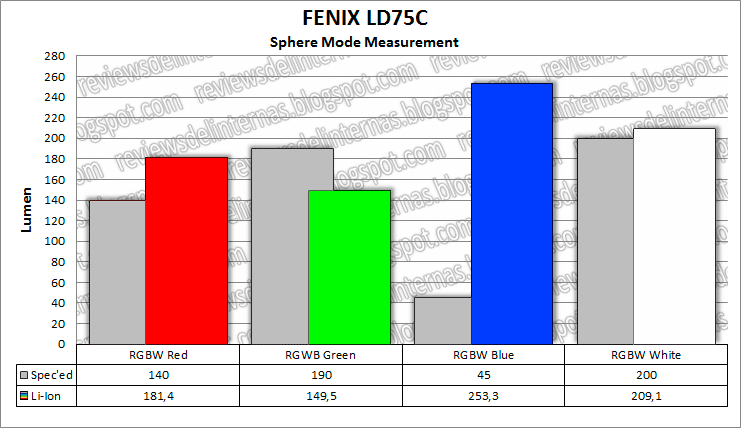
Color light readings offer strong disagreements, because obviously the sensor of the sphere does not provide the same accuracy at all ranges of wavelength. Still, we can get an idea of the "general" brightness of each of the different color modes.
PERFORMANCE:
A great novelty found in this LD75C is the disappearance of the typical stepdown controlled by time, and this Fenix happens now to be thermally controlled. Although I do not have the details, at a certain temperature the flashlight will reduce its output to not exceed a temperature limit, protecting itself from thermal damage while helping with better management of available energy, increasing efficiency.
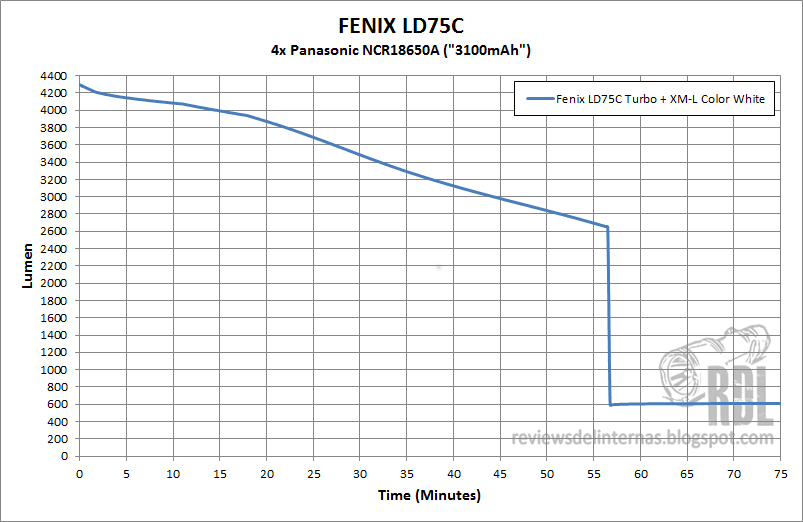
To test runtime I used a small 60mm fan to keep the flashlight fresh, so that the drawing of the line is more or less flat.
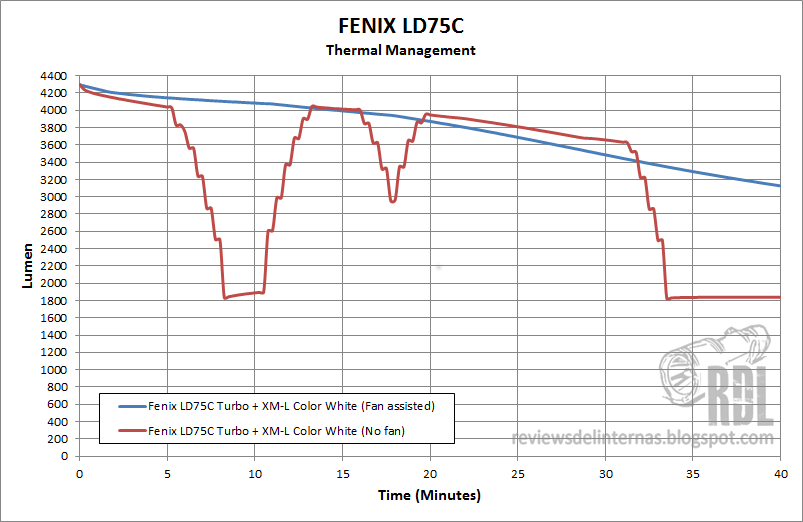
Thermal control monitors the temperature of the flashlight reducing performance of the four XM-L2. To illustrate the behavior, I superimposed the first 40 minutes of the previous test (performed using a small fan, blue line) with the data obtained after repeating the test, this time without active cooling (red line), so you can see as the torch makes two swings at its output, which by reducing the current through the LED emitters has managed to lower the temperature and, once stabilized, return the previous output level. We can also see how these fluctuations, thermal stepdowns, are made gradually and slightly staggered over several minutes.
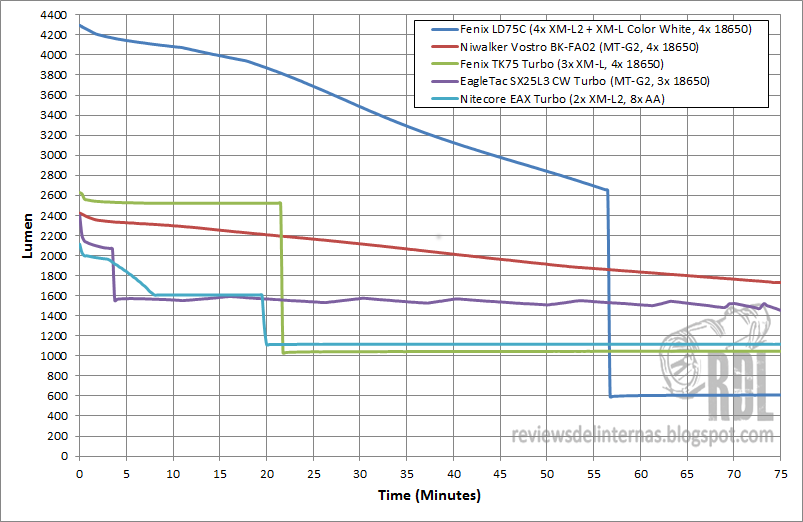
Compared my other high output flashlights, the LD75C exceeds by far all readings taken by me so far.
BEAM PROFILE:
By the special arrangement of the reflectors for XM-L2 white light, some overlap in the beam profile is expected. Also, seeing the size of the optics is also expected tendency towards the flooder side, but thanks to the monstrous amount of light this Fenix is able to throw to the not inconsiderable figure of 490m (60kcd).
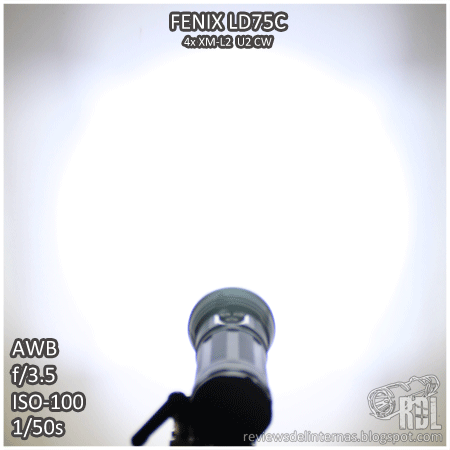
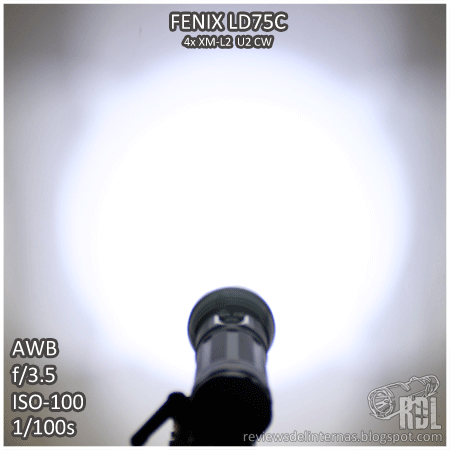
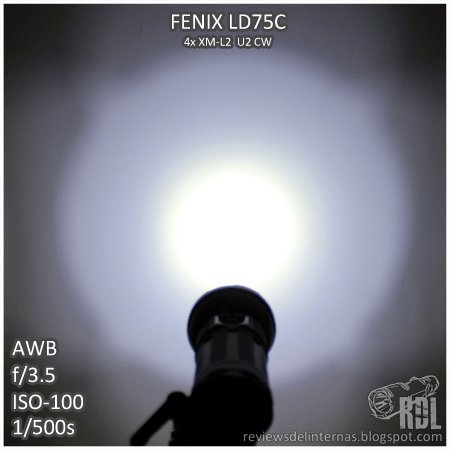
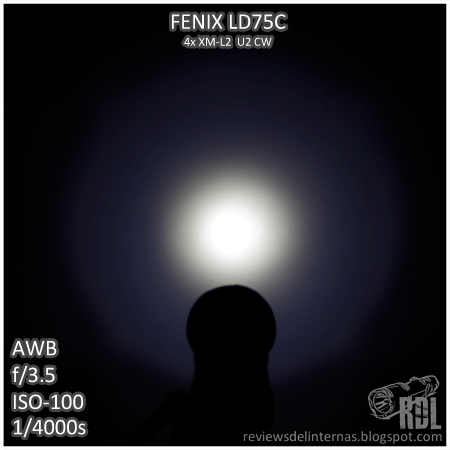
The tint of the XM-L2 U2 is cold white with a slight yellowish-green hue in the corona surrounding the hotspot.

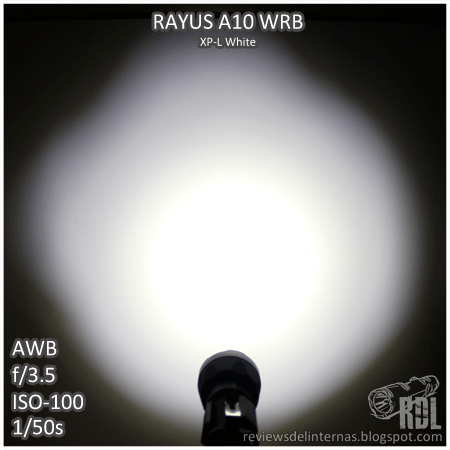
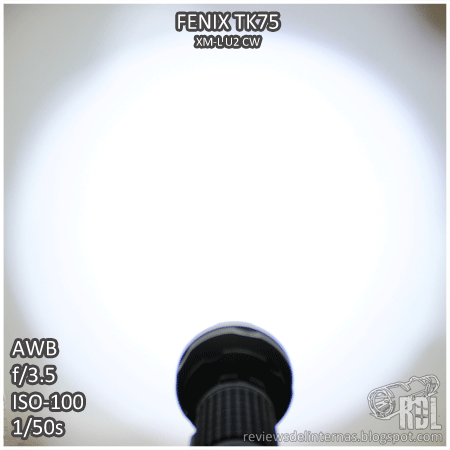
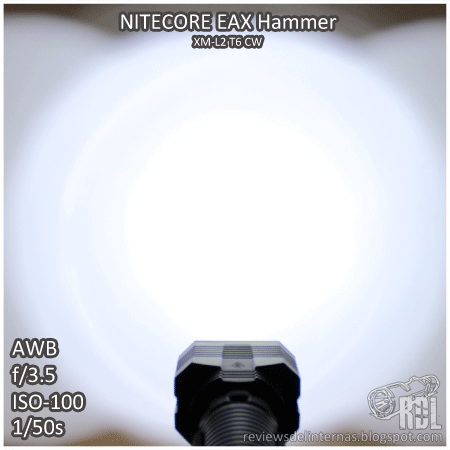
The color light has a decent beam profile, though far from perfect. As a result of the overlap of many reflectors, some light is bounced off the XM-L2 reflectors causing some aberrations and darker portions in the profile.
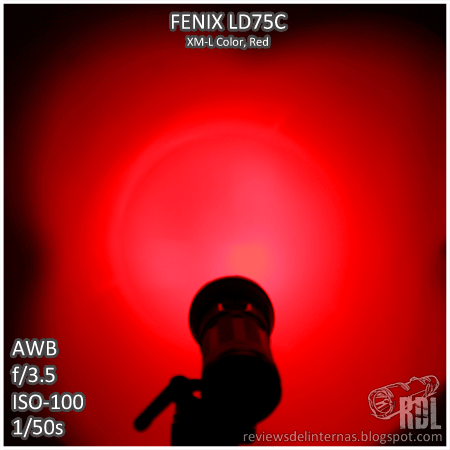
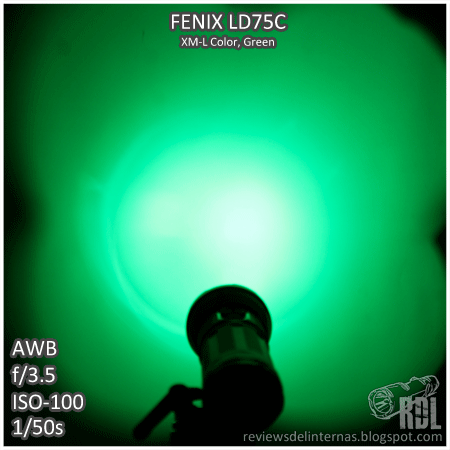
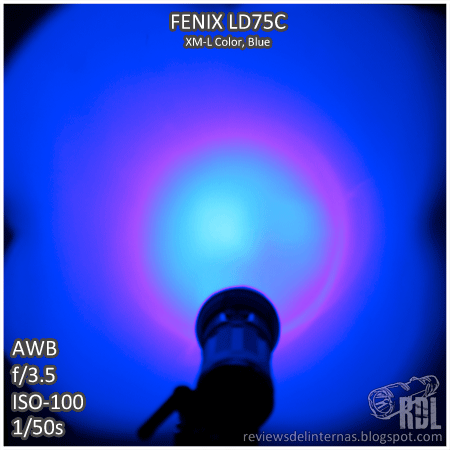
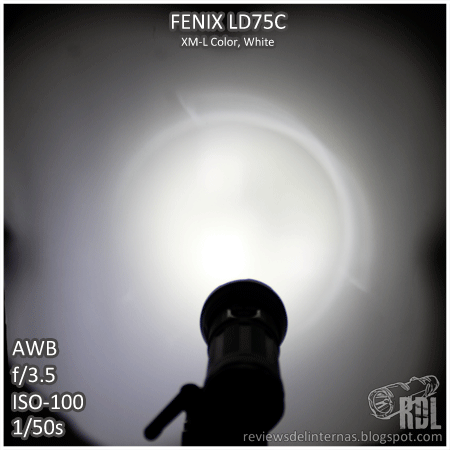
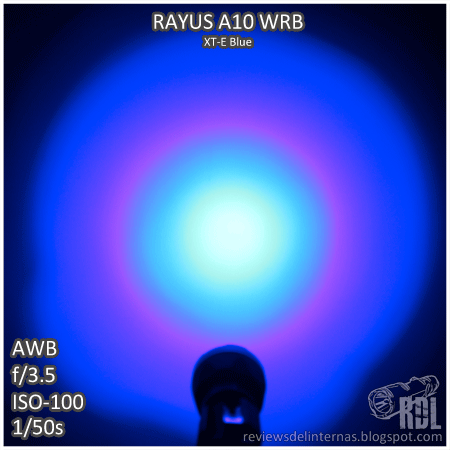
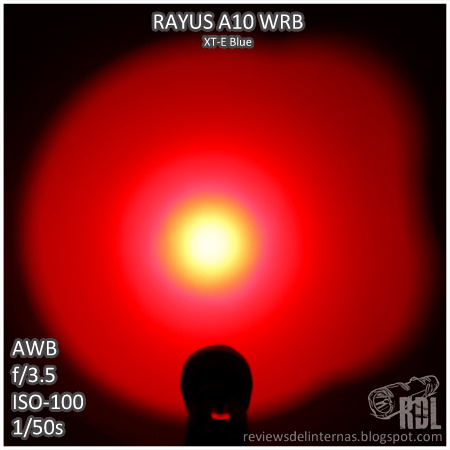
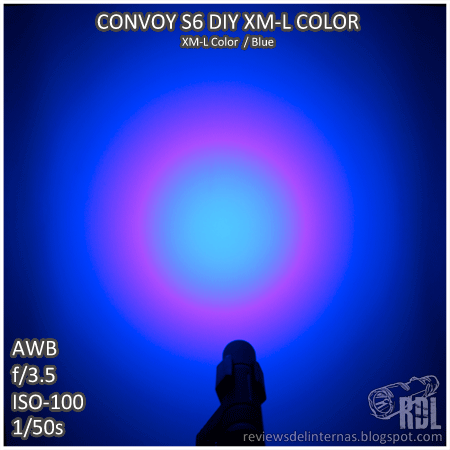
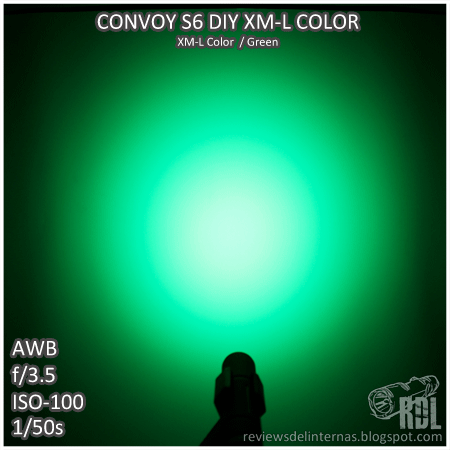
The mixture of colors, from each source of independent reflectors has a beam profile in which the hotspot is clearly white, while the peripheral light is fairly uniform tinted.
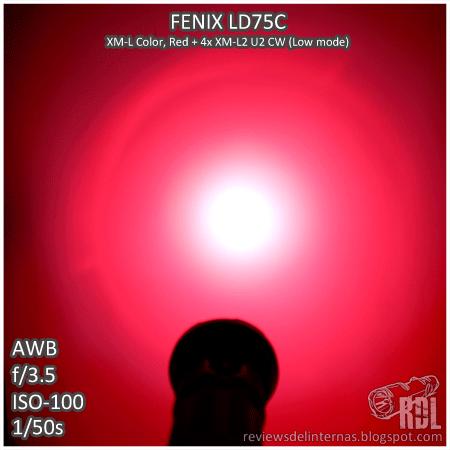
Finally, thanks to the simple and quick handling of different colors it is easy to make artistic night photography compositions using long exposure, multiplicand the 4 different colors by unleashing our imagination.
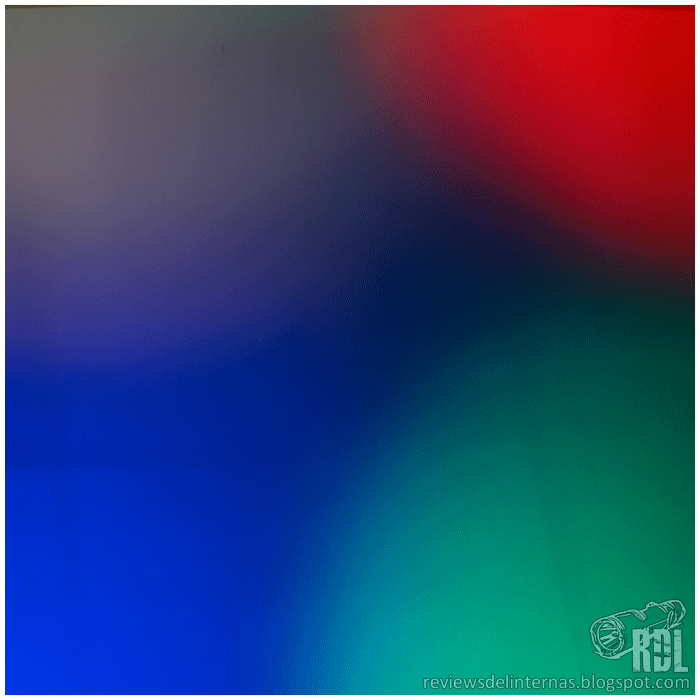
PERSONAL CONCLUSION:
The new LD75C was struck first by the monstrous amount of light that is capable of emitting maintaining a relatively compact size, and second by the wide range of possibilities, especially to night or creative photography fans.

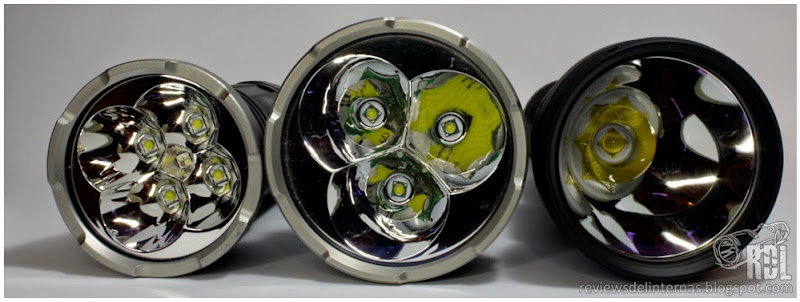
Fenix LD75C · Fenix TK75 · Niwalker Vostro BK-FA02
Negatives: There are several aspects that I believe can be improved, among which I'll highlight the absence of an electronic lock mode, especially being the threads isolated so if you want to ensure that the flashlight is not accidentally turned on while, e.g., we transport it in a backpack the only way is removing batteries. On the other hand, the flashlight rolls free on smooth surfaces because it lacks any anti-roll system.
Another concern point is the arrangement of batteries … If one adheres to marks in the flashlight, nothing would happen but considering that most 4-cell flashlights with similar provision have a "standard" system in which the spring goes to the negative and the solid contact to positiveit is possible that more than once we install incorrectly some of the batteries, and although the light has electronic protection, force us to spend some time re-installing the batteries. Finally, I believe that after some experience already with the XM-L Color the only utility of this LED in flashlights is behind a heavy diffusing lens.
Positives: I liked the ability to use both types of emitters independently, allowing us to combine the traditional white light with green, red or blue tones, which has an unexpectedly good response, as we maintain a good relationship between the white light power and the desirable effects of color light. The construction is sturdy and in hand is really comfortable. With 4200LM in your coat pocket one feels the warm feeling of switching the night to day at your leisure. Quick access to Turbo mode is very well implemented, allowing us with a button click go full power without worrying about memory. Finally, although not my occupation, this tool will be a real desired toy for long exposure photographers as it will give them wings to let imagination run wild with mixtures and original compositions.
Fenix LD75C sample provided by Fenix via Global Testing Campaign.



